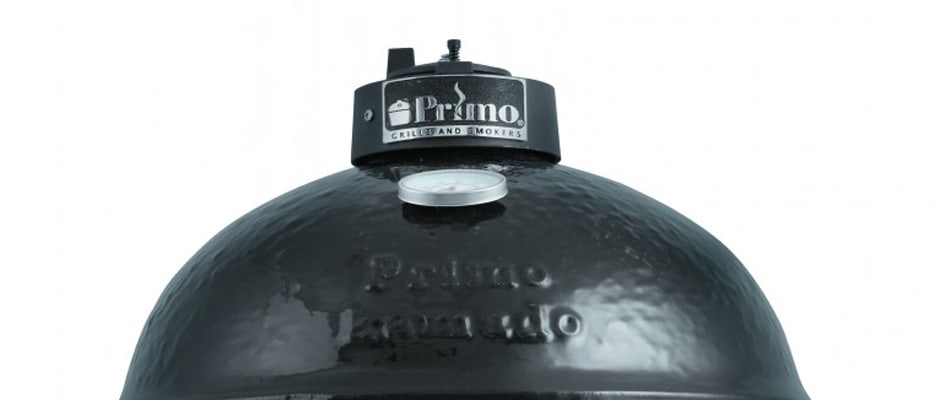Pros
Cons
Introduction
Product Tour
{{section_header}}{{section.name}}{{/section_header}} The Primo Kamado is a large, heavy grill that is constructed of metal covered in a ceramic coating. As such, it retains the heat well while cooking, but it is also a pain to move and install. Moving it is made easier with the optional cart (which we used in our testing).
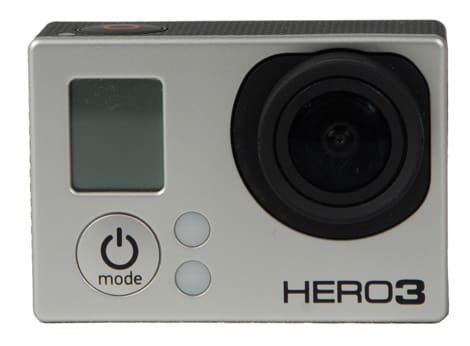

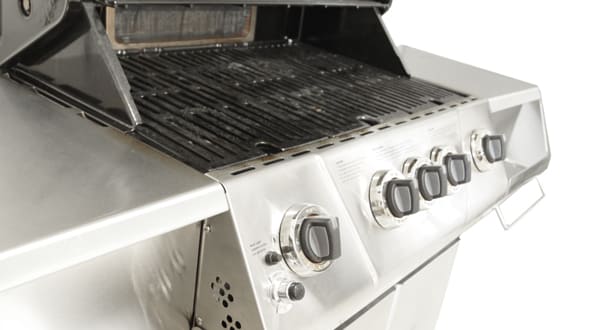
Controls
{{section_header}}{{section.name}}{{/section_header}}
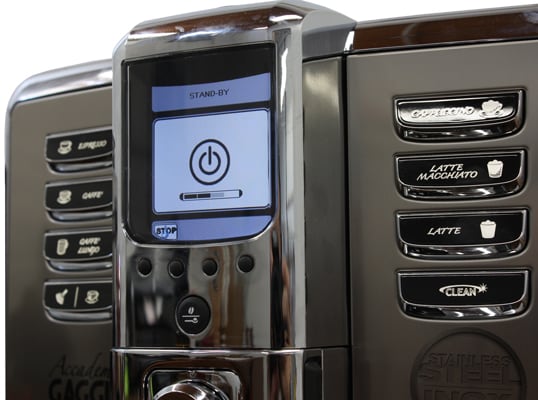
Main Grilling Area
{{section_header}}{{section.name}}{{/section_header}}
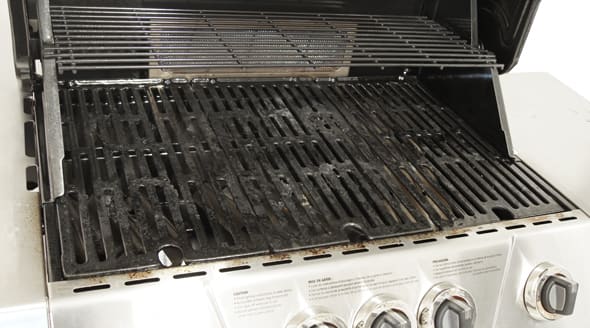
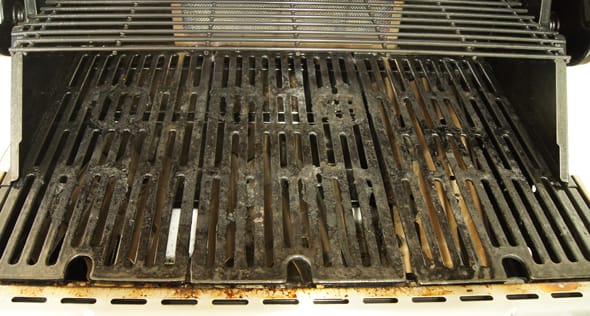
Thermometer
{{section_header}}{{section.name}}{{/section_header}}

Overview
The Primo Kamado is the sort of charcoal grill that Fred and Barney might have used on the Flintstones, with no bells or whistles. But it performs well for all of its simplicity.
Heatup Time
{{section_header}}{{section.name}}{{/section_header}}
We found that the {{product.name}} was very quick to heat up, reaching our low fire cooking temperature of 325°F just 7 minutes 35 seconds, and reaching our high fire cooking target temperature of 625°F in an incredible 2 minutes and 22 seconds. We reached these two settings by adjusting the air vent on the lid of the of grill: the low fire setting by half opening the vent, and the high fire setting by completely opening it.
Low Fire Cooking Performance
{{section_header}}{{section.name}}{{/section_header}}
We test the cooking performance of grills by putting a number of meat patties onto the pre-heated grate, then cooking them for 5 minutes on either side, and then measuring the temperature of the center of the patty to determine how long it would take to fully cook at this setting. We found that the 4 patties that we were able to fit onto the grate would take between just over 9 and 11 minutes to cook. That is pretty fast for a low fire setting, but it is also a fairly wide range: you will have to keep a close eye on the patties with this grill to make sure that they don't get overcooked, as they will be done at different times.
{{comparison_bars title="Low Fire Performance", attribute="Low Temp Performance Rating", xLabel="Cooking Performance Score"}}
Low Temperature Uniformity
{{section_header}}{{section.name}}{{/section_header}}
We also measure the uniformity of the temperature above the cooking grate, which was fairly even for this grill. The temperature was highest at the center of the grill, but the temperature at the edge of the grate was only about 70 degrees lower.
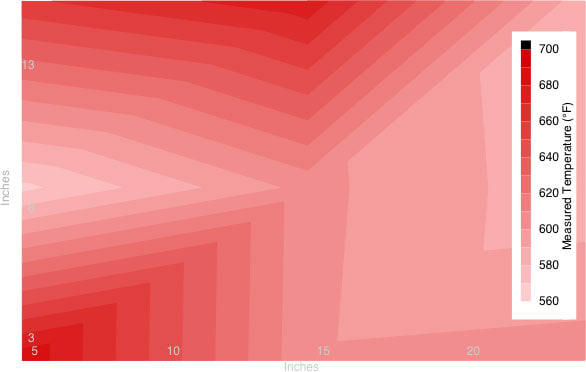
Low Temperature Consistency
{{section_header}}{{section.name}}{{/section_header}}
We did find that the temperature of the grill was a little inconsistent over time: as the charcoal burnt, the temperature drifted upwards during our 15 minute measuring test.
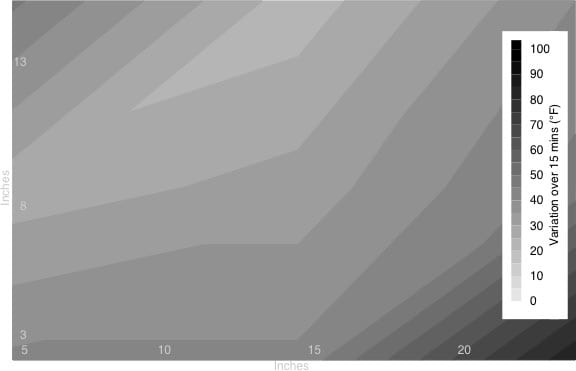
High Fire Cooking Performance
{{section_header}}{{section.name}}{{/section_header}}
When we opened the air vents to set this grill to the high fire cooking setting, we found that it seemed to do a much better job of cooking our meat patties: it cooked them not only quicker, but also much more consistently. From our tests, we calculated that the patties would take between 8.5 and just over 10 minutes to fully cook.
{{comparison_bars title="High Fire Cooking Performance", attribute="High Temp Performance Rating", xLabel="Cooking Performance Score"}}
High Temperature Uniformity
{{section_header}}{{section.name}}{{/section_header}}
The temperature across the grill was also much more uniform when it was set to the high fire setting, with much smaller variation.

High Temperature Consistency
{{section_header}}{{section.name}}{{/section_header}}
The temperature also remained more consistent over time at the high setting, presumably because of the more consistent air flow from the open vent.
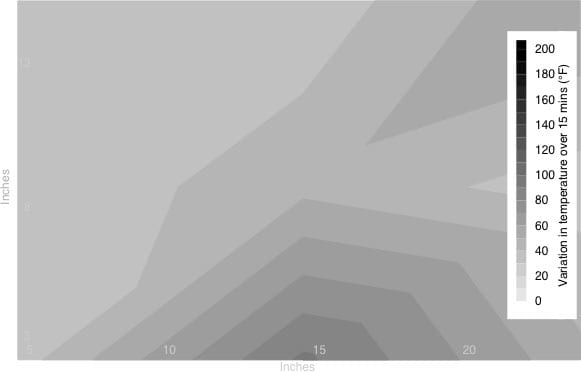
Case & Handle Temperature
{{section_header}}{{section.name}}{{/section_header}}
Both the case and the lid of this grill get pretty hot: we measured the maximum temperature of the case at an average of 298°F, and the small handle on the lid at 134°F after 15 minutes on the high setting. That's definitely on the high side: the handle is not hot enough to immediately burn the skin, but a good thick glove is a necessity to avoid burns.
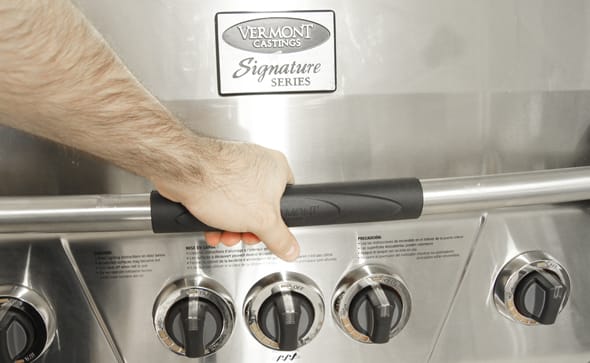
The image below was taken with an infrared camera to show the heat levels of the lid. The numbers at the bottom indicate the temperature scale.

Output & Fuel Life
{{section_header}}{{section.name}}{{/section_header}}
We don't measure the BTU/Hr output of charcoal grills, but we did find that this grill can produce a lot of heat with a large load of charcoal onboard. It also retains heat well: the body of the grill remains very warm for several hours after the charcoal has run out.
Overview
The Primo Kamado is a very straightforward grill, with no igniters or other features.
Controls
{{section_header}}{{section.name}}{{/section_header}}
The only control on this grill is the single air valve at the base of the body, which controls the air flow over the charcoal and thus the temperature of the grill (more air means a higher temperature). This valve is easy to use, but you do need to be cautious, as it gets rather hot along with the whole body of the grill.

Fuel
{{section_header}}{{section.name}}{{/section_header}}
Charcoal is loaded into the ceramic plate at the bottom of the grill. Primo recommends the use of lump charcoal rather than briquettes.
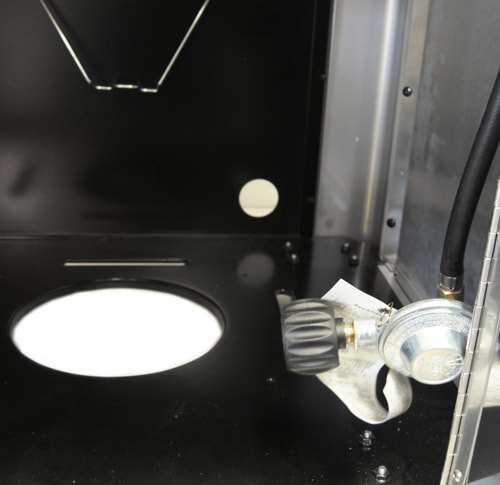

Lighter/Ignition
{{section_header}}{{section.name}}{{/section_header}}
No lighter is included, so you have to light the charcoal yourself.
Cooking Area
{{section_header}}{{section.name}}{{/section_header}}
The cooking area of the grill is the circular grate on the top, which has a diameter of 18 inches, making for a total area of 254.7 square inches. That is rather on the small side compared to other charcoal grills like the Weber Performer, and is much smaller than the are offered by propane models like the Vermont Castings {{product.name}}.


Warming Area
{{section_header}}{{section.name}}{{/section_header}}
There is no warmup area to store food after cooking or to warm items: you'll have to use a second device for this if required.
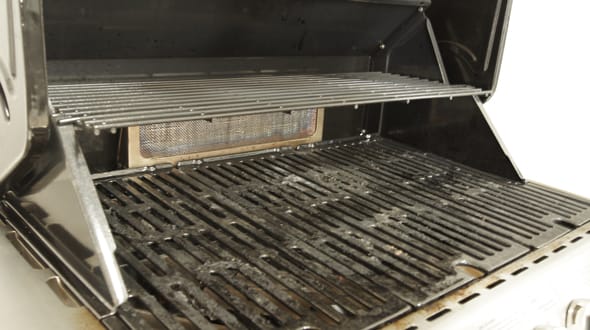
Other Areas
{{section_header}}{{section.name}}{{/section_header}}
The {{product.name}} does not come with any additional food preparation areas, but the company does offer a number of specially designed cart that cost extra but include preparation areas. The cradle that we used in our testing can also have two side tables added.

Cleanup
{{section_header}}{{section.name}}{{/section_header}}
The cleaning grate is relatively easy to clean: it lifts straight off for cleaning. Removing the ashes from the charcoal is rather more difficult, as it involves reaching into the body of the grill and scooping them out: there is no way to easily dump them all out at once.
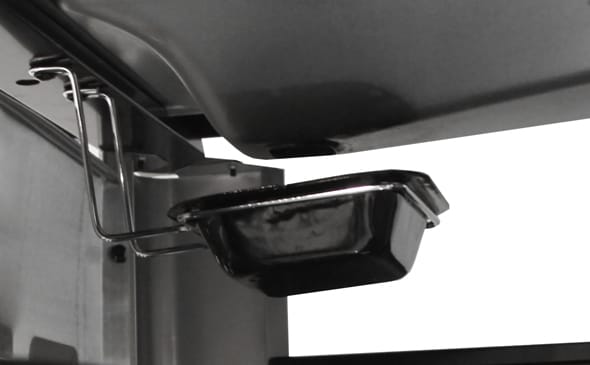
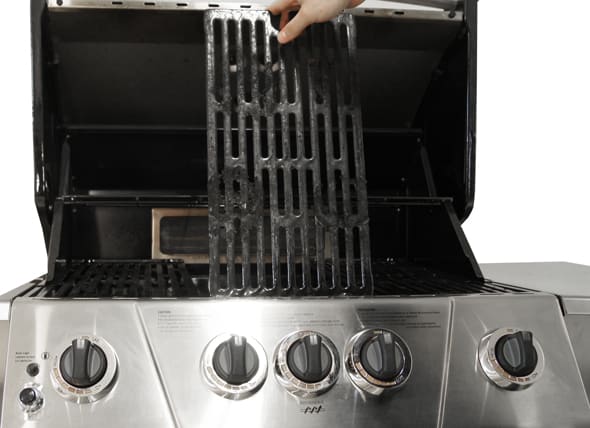
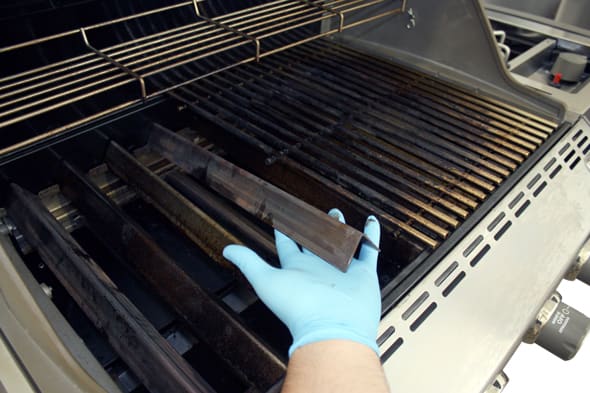
Other Features
{{section_header}}{{section.name}}{{/section_header}}
The {{product.name}} does not offer any additional features. We reviewed it with the optional $135 cradle, which allows it to be moved more easily. This cradle can also hold additional side tables for food preparation.
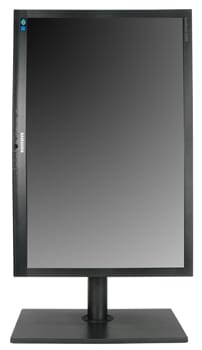
The LS24A850DW in portrait orientation
Comparison Overview
{{section_header}}{{section.name}}{{/section_header}}
Both these grills burn charcoal, but the Primo Kamado is the better grill, with better overall performance. The Weber has more cooking space, but this comes at the cost of more variable cooking times and temperatures. You are paying more for the performance of the Kamado and sacrificing storage space and style, though, so the Weber might be a good pick for the casual griller, while the Primo will appeal to the enthusiast out there.
Comparison Overview
{{section_header}}{{section.name}}{{/section_header}}
Propane versus charcoal debate aside, both of these grills are for the serious enthusiast. The Primo is less expensive and could never possibly break, and offers some of the most even heating of any charcoal grill. Still, only the most skilled barbecue expert could match the temperature control of the Vermont Castings, which is one of the most even-heating grills out there.
Comparison Overview
{{section_header}}{{section.name}}{{/section_header}}
Putting aside the age-old gas versus charcoal debate, both grills offer their own merits. The Primo gets very, very hot and has near 100% reliability due to the fact it's little more than a large ceramic bowl. The Weber has more even temperature and a larger grilling area, and takes a lot less time to heat up. Which one you pick will probably depend on your own lifestyle and needs.
Overview
The Primo Kamado offers good cooking performance and is simple enough for a caveman to use, but it is a strictly manual device that requires some preparation and attention to cleanup.
Performance
{{section_header}}{{section.name}}{{/section_header}}
The {{product.name}} performed well overall: we found that it cooked pretty quickly and consistently, although the cooking area is rather small in comparison to other grills, especially the larger propane models.
Usability
{{section_header}}{{section.name}}{{/section_header}}
Don't buy this grill if you want bells and whistles, as it is a strictly manual device. This has a good and a bad side: it keeps the grill simple to use, but it also means that you have to either vacuum or scoop out the ash when cleaning.
Meet the tester
Richard Baguley is a veteran writer who has written about technology ranging from Alphabet to Zip file utilities. He has contributed to pretty much every major tech publication, including Amiga Format Magazine, PC World, Wired, CNET, Toms Guide, Forbes, and many others. He lives in the Boston metro area with his wife, dog, and an indeterminate number of cats.
Checking our work.
Our team is here to help you buy the best stuff and love what you own. Our writers, editors, and experts obsess over the products we cover to make sure you're confident and satisfied. Have a different opinion about something we recommend? Email us and we'll compare notes.
Shoot us an email